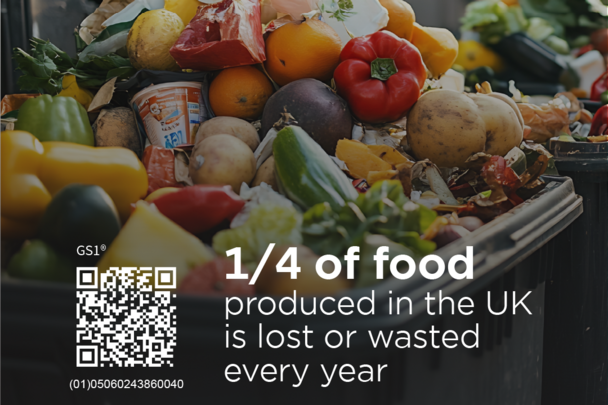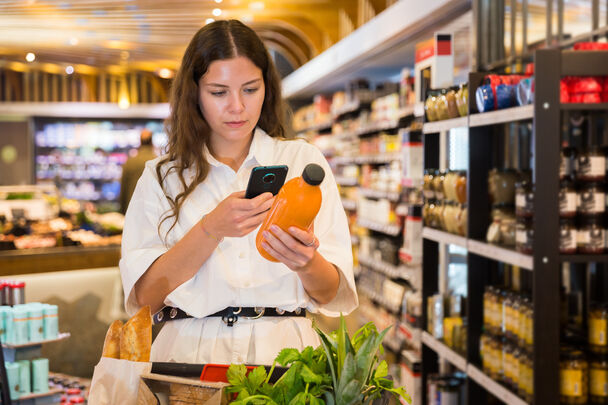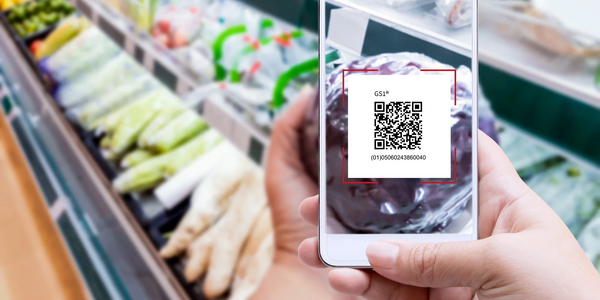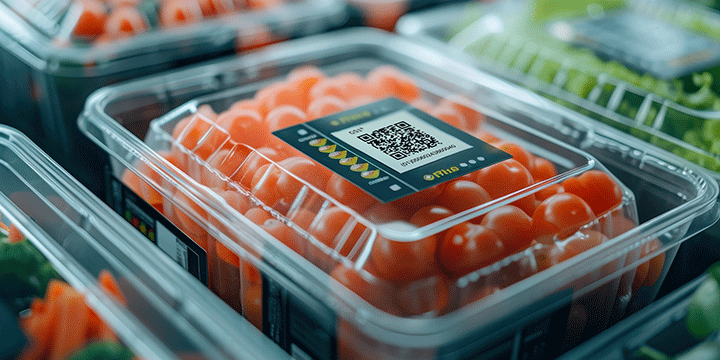November 05, 2025 Industry news
Every year, UK households throw away millions of tonnes of food. It drains family budgets, erodes trust in retail and wastes the resources behind every item on the shelf. It also accelerates climate change.
Our latest, research, based on a nationally representative survey of 2,000 adults, reveals the scale of the problem. Half of shoppers have bought food that turned out to be out of date and two thirds have thrown food away because they were not sure it was safe to eat. The average household loses £17.85 a month to food waste. That is more than £200 a year in perfectly good food discarded out of confusion or mistrust.
This is not just a consumer issue. It is a supply chain failure and it is costing the industry more than lost sales. Seventy one per cent of shoppers say supermarkets should do more to tackle waste. The environmental toll is even greater with food waste contributing up to 10 per cent of global greenhouse gas emissions, according to the UN. Every wasted item represents wasted water, energy, land and labour.
Thankfully, there is a solution. One that is already in use, becoming increasingly recognised and already making a difference.
QR codes powered by GS1 are helping retailers and brands turn packaging into a gateway to real-time product information. From expiry tracking to storage advice and recipe inspiration, these smart codes give consumers the confidence to use what they buy and waste less.
The scale of the problem
Food waste is not just a household inconvenience. It is a systemic issue that affects every link in the supply chain. Consumers are confused, retailers are exposed and the environmental cost is mounting.
According to our research, 48 per cent of shoppers say food goes off before they can use it. One in three forget items are there. One in four forget to check use-by dates. The result is millions of tonnes of edible food thrown away every year.

The emotional impact is just as stark. Forty three per cent feel it is a waste of money. Thirty three per cent feel annoyed. Twenty eight per cent feel guilty. These are not just wasted products. They are wasted experiences, wasted trust and wasted potential.
Retailers are under pressure. Shoppers expect unsold food to be donated to charities, items nearing expiry to be discounted and imperfect produce to be sold rather than discarded.
These expectations are not optional extras. They are becoming part of how consumers judge value and responsibility.
Why is this happening?
The root cause is information failure. Packaging is static, labels are confusing and consumers are left guessing.
Three-quarters of shoppers say clearer labelling would help reduce waste but clarity alone is not enough. People want context. They need to know how to store food, when to use it and whether it is still safe. They want guidance that adapts to how they live, not just a printed date that leaves room for doubt.
Our research shows the most common reasons for throwing food away are simple. It goes off before it can be used, people forget it is there, they misjudge portion sizes or buy too much. These behaviours are not driven by indifference. They are driven by uncertainty and lack of timely prompts.
The environmental and economic cost
Globally, food waste accounts for eight to ten per cent of greenhouse gas emissions. That is more than the aviation sector. When food decomposes in landfill, it produces methane, a greenhouse gas far more potent than carbon dioxide in the short term. Cutting food waste is one of the fastest ways to reduce emissions while improving food security.
The economic cost is equally stark. WRAP estimates that UK households throw away food worth billions every year. For families, that means hundreds of pounds lost annually. For retailers, it means shrink, lost margin and reputational risk. For governments, it means missed targets on waste reduction and climate commitments.
Digital solutions that deliver
This is where GS1 standards come in. Specifically, QR codes powered by GS1.
These smart codes connect physical products to real-time digital information. They turn packaging into a dynamic source of truth that give consumers the confidence and increase trust.

Imagine scanning a product and instantly seeing how long it will last in your fridge, how to store it properly, what to cook with it and whether it is still safe to eat. Imagine getting a gentle alert when something in your fridge is nearing its use-by date. These are simple interventions that change behaviour and cut waste.
Almost half of shoppers say they would use QR codes to track expiry dates and receive alerts. Forty two per cent say they would trust freshness more if they could scan for advice.
More than a third support making QR codes mandatory on all food products. This is not a niche idea. It is becoming a mainstream expectation.
Standards in action
GS1 standards are the foundation of trusted product data. They ensure consistency, interoperability and global reach. Global Trade Item Numbers (GTINs) give every product a unique identity. GS1 Digital Link connects that identity to rich online content. Verified by GS1 ensures data accuracy and integrity.
Retailers like Tesco are already using QR codes powered by GS1 to improve date management and reduce waste. Brands are using them to share allergen information, storage advice and recipe inspiration. These are not pilots. They are proof points that digital transparency works.
Turning good intentions into real-world action
Our research shows that consumers want clear storage advice, guidance on how long products last once opened, tips for freezing unused portions and ideas for using leftovers. QR codes powered by GS1 can deliver all of this in a way that is accessible, updatable and easy to integrate with everyday habits.
This is not just about technology. It is about trust. When consumers feel supported, they waste less. When retailers provide that support, they sell more and strengthen loyalty.

A clear call to action
Food waste is a solvable problem. The standards exist, the technology is proven and the demand from consumers is clear.
For retailers, the moment to act is now. By adopting QR codes powered by GS1 you can meet consumer expectations, reduce waste and protect margins. For brands, it is an opportunity to earn trust in the kitchen, not just at the point of sale. For policymakers, supporting digital product information will accelerate progress toward national waste and emissions targets.
It is time to turn information into impact.



